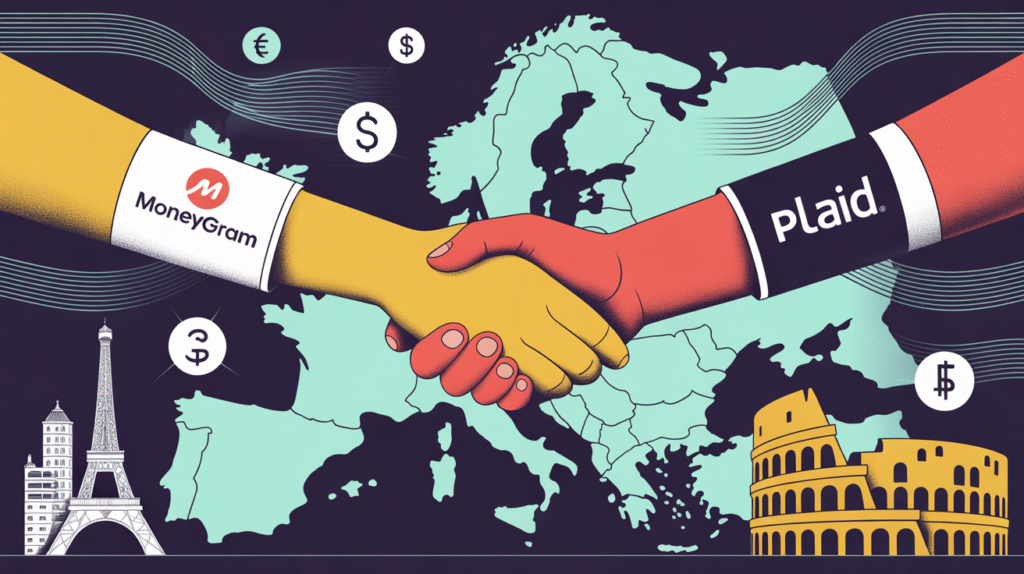A New Arrangement for European Users
As part of this new offering, Europe-based MoneyGram customers will now be able to connect their bank accounts directly using Plaid’s open banking APIs. Users will be able to authenticate their bank details without having to enter data manually. They will also have the ability to utilize a bank-based transfer to initiate a cross-border remittance or domestic payment to a receiver on MoneyGram’s platform. In MoneyGram’s perspective, this is one of several payment methods offered, and it provides a means for customers to pay with their bank accounts that broadens option and provides the most frictionless experience in any payment flows. MoneyGram representatives say the rollout reflects MoneyGram’s goals of offering easier international payments and increase the ability to transact digitally in key markets. They believe using Plaid’s open banking system is designed to make international transactions faster, easier, and meet compliance and safety standards. From Plaid’s perspective, they view this as much more than data sharing. The team believes this phase of open banking is actually becoming a payment processing infrastructure, particularly around cross-border remittances. They view layering open banking into payments as a natural evolution of the ecosystem.Network Scale, Security, and Compliance Emphasis
MoneyGram has a large global reach, operating in over 200 countries and territories with a digital and retail presence. Through this partnership with Plaid, it plans to expand its bank-funding capabilities into more European regions and boost its omnichannel offering. The announcement places a strong emphasis on security and data protection. The firms claim that Plaid’s security architecture is connected with MoneyGram’s compliance and consumer protection mechanisms. They seek to protect sensitive financial information during each transaction.Anthony Soohoo, CEO at MoneyGram, said:
“We’re working with Plaid to build faster, more powerful tools that make cross-border money movement simple and reliable for everyone.”
In turn, Plaid’s Brian Dammeir, Head of Payments & Financial Management, remarked:
“When it comes to payments, Europeans want to move money across the continent and beyond quickly and friction-free. MoneyGram provides increasingly in-demand experiences, powered by Plaid’s Pay by Bank.”
These statements reflect a shared vision: reduce intermediaries, increase transparency, and let end users engage in lower-cost, more direct bank-facilitated flows.
Market Context and Implications
The expansion comes at a time when open banking has matured significantly in Europe. Open banking is driven largely by regulatory mandates (such as PSD2) and growing consumer demand for innovation in payments and financial services. Many fintechs and banks have built APIs, plug-ins, and platforms that rely on open banking as foundational infrastructure.
By embedding bank funding options into its remittance stack, MoneyGram is tapping into that trend. It could help the company reduce dependence on traditional rails (like card networks or correspondent banking) and potentially lower costs and settlement delays.
For European users, the promise is twofold: improved convenience (no manual entry, fewer steps) and enhanced security (relying on authenticated bank connectivity). The model can also support better consumer protection frameworks because authentication and compliance checks happen upstream in the bank-integrated logic.
However, execution risks remain. Each European country has its own banking ecosystem, regulatory environment, and banking user behavior. Implementation will require custom connectors, compliance adjustments, and ongoing monitoring. Plaid and MoneyGram will have to maintain robust governance, data privacy, fraud detection, and fallback systems when banks or APIs malfunction.
In addition, consumer trust is pivotal. Even though many customers appreciate smooth UX, incidents of data breaches or misuse in the fintech space tend to reverberate quickly. The companies will need to demonstrate strong operational resilience and transparency to customers and regulators alike.
Broader Strategy
This European expansion builds on prior successes. In the U.S., the MoneyGram-Plaid partnership had already enabled pay-by-bank flows; now, they are scaling that model across borders.
Meanwhile, MoneyGram has also been innovating in related directions. For instance, the company recently unveiled a mobile app with a USD-backed stored value account designed to support both fiat and stablecoin balances, enabling users to receive funds instantly, hold them stably, or withdraw to other channels. That product is slated to launch initially in Colombia.
Going forward, the success of this collaboration would likely be measured by adoption rates, the volume of payments processed via bank links, cost efficiencies, and user satisfaction.
The MoneyGram–Plaid expansion into Europe signals a push toward embedding open banking directly into remittance and cross-border payments flows. If rolled out well, it may unlock smoother, more cost-efficient experiences for users. But success will depend on operational excellence, strong security and compliance, and the ability to adapt to diverse banking landscapes across Europe.




